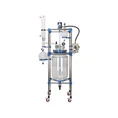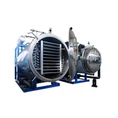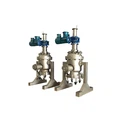10 Key Insights for Efficient and High-Quality Production
When it comes to milk powder manufacturing, using a spray dryer for milk powder is a game-changer. Whether you are exploring new production methods or looking to refine existing processes, understanding spray drying technology and its best practices will help you achieve consistently high-quality results. Anyone from a seasoned dairy professional to a newcomer in the milk powder manufacturing industry should be able to glean valuable insights from this post.

Understanding the Milk Powder Spray Drying Process
Spray drying is a method that rapidly turns liquid milk into a stable, long-lasting powder. In milk powder production, this method involves atomizing liquid milk into a mist of droplets, which then pass through a stream of hot air. As the moisture evaporates, finely powdered particles remain. This process is widely used in the dairy industry because it effectively preserves the nutritional profile of milk while greatly extending its shelf life.

Why Use a Spray Dryer for Milk Powder?
1. Efficiency: Compared to other drying methods, spray dryers can handle large volumes of liquid with minimal downtime.
2. Quality Control: The rapid moisture removal at carefully controlled temperatures helps preserve taste, color, and nutritional value.
3. Particle Uniformity: Spray drying ensures consistently sized powder particles, which improves solubility and ease of packaging.

Key Factors to Consider
Feed Composition: The properties of the milk (fat content, solids concentration) influence the drying rate and final powder quality.
Air Temperature: Too high can scorch the product; too low can lead to incomplete drying and clumping.
Atomization Method: Centrifugal vs. nozzle atomizers affect particle size and drying uniformity.
Exhaust Air Handling: Controlling humidity in the drying chamber helps achieve a consistent final moisture level.
Steps in the Milk Powder Spray Drying Process
1. Preheating and Standardization
Liquid milk is first standardized to ensure consistent fat and solids content. This step lays the groundwork for producing a uniform powder.
2. Concentrating the Milk
Often, milk is concentrated through evaporation prior to spray drying. This step reduces the overall volume, making the drying process more efficient.
3. Atomization
The concentrated milk is fed into the spray dryer's atomizer. Whether using a nozzle or a spinning disc, atomization creates tiny droplets, increasing the surface area for faster drying.
4. Drying Chamber
These droplets are introduced into a hot-air environment inside the chamber. Moisture evaporates quickly, leaving behind fine milk powder particles.
5. Separation and Collection
Cyclones or bag filters separate the dried milk powder from the exhaust air. The collected powder is then cooled and readied for final packaging.
Common Challenges and Solutions
Despite its efficiency, a spray dryer for milk powder can present some common challenges:
Caking or Clumping: If the chamber humidity is not well-controlled, the powder can stick together. Using proper air temperature and dehumidification helps mitigate this.
Thermal Degradation: Overheating can affect the protein and flavor profile of milk. Monitoring inlet and outlet temperatures is crucial.
Powder Fines Loss: Powder can become airborne and escape, affecting yield. Installing robust dust collection systems helps retain valuable products.
Cleaning and Maintenance: Dairy products can leave residues that require strict cleaning protocols. Automated cleaning-in-place (CIP) systems can
drastically reduce downtime and ensure hygiene.

Conclusion
A spray dryer for milk powder remains a cornerstone of modern milk powder manufacturing due to its efficiency, ability to preserve product quality, and
adaptability to large-scale production. By carefully managing each stage of the process-standardizing milk, selecting the right atomization method, optimizing temperature settings, and maintaining rigorous cleaning protocols-you can minimize product losses and maximize production consistency. Ready to optimize your milk powder production? Contact us today for a personalized spray-drying equipment solution!







